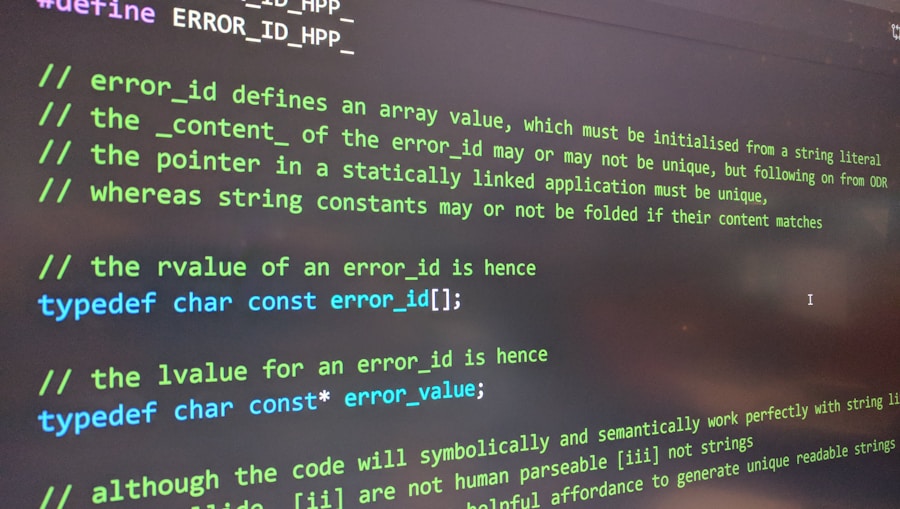As I delve into the world of artificial intelligence, I find myself captivated by the emergence of large language models (LLMs). These sophisticated systems, powered by vast amounts of data and advanced algorithms, have revolutionized the way we interact with technology. LLMs, such as OpenAI’s GPT-3, are designed to understand and generate human-like text, making them invaluable tools in various applications.
Their ability to process and analyze language has opened up new avenues for communication, creativity, and problem-solving. The sheer scale of these models is impressive. Trained on diverse datasets that encompass a wide range of topics, LLMs can generate coherent and contextually relevant responses.
This capability not only enhances user experience but also allows for more nuanced interactions between humans and machines. As I explore the potential of LLMs, I am constantly reminded of their transformative impact on industries such as education, healthcare, and customer service. The future seems bright as we continue to harness the power of these models to improve our daily lives.
Key Takeaways
- Large language models are revolutionizing natural language processing and problem-solving by leveraging massive amounts of data and advanced algorithms.
- These models have the potential to enhance decision-making and reasoning by understanding and processing complex human language.
- Implementing large language models for reasoning comes with challenges such as data privacy, bias, and ethical considerations that need to be addressed.
- Despite their potential, large language models also have limitations, including the risk of misinformation and the need for continuous monitoring and improvement.
- The future of large language models in reasoning holds opportunities for further advancements in fields such as healthcare, education, and customer service, but also requires careful consideration of ethical implications and responsible use.
Understanding the Potential of Large Language Models in Reasoning
When I consider the reasoning capabilities of large language models, I am struck by their potential to mimic human thought processes. These models are not just about generating text; they can analyze information, draw inferences, and even engage in complex problem-solving tasks. By leveraging their vast training data, LLMs can identify patterns and relationships that may not be immediately apparent to human users.
This ability to reason through language opens up exciting possibilities for various applications. One of the most fascinating aspects of LLMs is their capacity for contextual understanding. Unlike traditional algorithms that rely on rigid rules, LLMs can adapt their responses based on the context of a conversation or query.
This flexibility allows them to engage in more meaningful dialogues and provide insights that are tailored to individual needs. As I reflect on this potential, I envision a future where LLMs serve as intelligent companions, assisting us in making informed decisions and enhancing our cognitive processes.
Leveraging Large Language Models for Natural Language Processing

In my exploration of natural language processing (NLP), I have come to appreciate how large language models are at the forefront of this field. NLP encompasses a range of tasks, from sentiment analysis to machine translation, and LLMs have proven to be exceptionally effective in tackling these challenges. Their ability to understand context and generate human-like text has significantly improved the accuracy and efficiency of NLP applications.
As I engage with various NLP tools powered by LLMs, I notice how they can streamline communication across different languages and cultures. For instance, machine translation systems have become more reliable, allowing individuals to connect and collaborate regardless of language barriers. Additionally, sentiment analysis tools can gauge public opinion on social media platforms with remarkable precision, providing valuable insights for businesses and organizations.
The versatility of LLMs in NLP is a testament to their transformative potential in bridging gaps in communication.
Unleashing the Power of Large Language Models in Problem-Solving
| Metrics | Results |
|---|---|
| Model Size | 175 billion parameters |
| Training Data | Over 570GB of text data |
| Training Time | Several weeks on thousands of GPUs |
| Accuracy | State-of-the-art performance on various NLP benchmarks |
| Inference Speed | Milliseconds per prediction on modern hardware |
The problem-solving capabilities of large language models are another area where I see immense promise. These models can assist in generating solutions to complex issues by analyzing vast amounts of data and identifying relevant information. Whether it’s in scientific research, business strategy, or everyday challenges, LLMs can provide valuable insights that enhance our decision-making processes.
I find it particularly intriguing how LLMs can simulate brainstorming sessions. By generating multiple ideas or solutions based on a given prompt, they can help individuals and teams explore various avenues before settling on a course of action. This collaborative aspect of problem-solving is something I believe will become increasingly important as we navigate an ever-changing world.
The ability to tap into the collective knowledge embedded within these models empowers us to tackle challenges more effectively.
Enhancing Decision-Making with Large Language Models
As I reflect on the role of large language models in decision-making, I recognize their potential to augment human judgment rather than replace it. These models can analyze data trends, provide recommendations, and even simulate potential outcomes based on different scenarios. By integrating LLMs into decision-making processes, organizations can make more informed choices that are grounded in data-driven insights.
Moreover, I appreciate how LLMs can help mitigate cognitive biases that often cloud our judgment. By presenting information objectively and offering diverse perspectives, these models encourage critical thinking and promote a more balanced approach to decision-making. As I envision a future where LLMs play a central role in strategic planning and resource allocation, I am optimistic about the positive impact they can have on both individual and organizational outcomes.
Overcoming Challenges in Implementing Large Language Models for Reasoning

Despite the remarkable capabilities of large language models, I am acutely aware of the challenges associated with their implementation for reasoning tasks. One significant hurdle is the need for high-quality training data. The effectiveness of LLMs is directly tied to the diversity and accuracy of the datasets used during training.
If the data is biased or incomplete, it can lead to skewed results and reinforce existing stereotypes. Additionally, there are technical challenges related to computational resources and infrastructure. Training large language models requires substantial processing power and memory, which may not be accessible to all organizations.
As I consider these obstacles, I recognize the importance of collaboration between researchers, developers, and policymakers to create frameworks that facilitate responsible and equitable access to LLM technology.
Ethical Considerations and Limitations of Large Language Models in Reasoning
As I navigate the landscape of large language models, ethical considerations loom large in my mind. The potential for misuse or unintended consequences is a pressing concern that cannot be overlooked. For instance, LLMs can inadvertently generate harmful or misleading content if not properly monitored.
This raises questions about accountability and responsibility in AI development. Moreover, I am mindful of the limitations inherent in LLMs when it comes to reasoning. While they can simulate human-like responses, they lack true understanding or consciousness.
Their reasoning is based on patterns rather than genuine comprehension, which means they may struggle with nuanced or abstract concepts. As I ponder these ethical dilemmas, I believe it is crucial for stakeholders to engage in ongoing discussions about the responsible use of LLMs and establish guidelines that prioritize safety and fairness.
Future Directions and Opportunities for Large Language Models in Reasoning
Looking ahead, I am excited about the future directions for large language models in reasoning tasks. As technology continues to evolve, I envision advancements that will enhance their capabilities even further.
Additionally, I see opportunities for collaboration between humans and LLMs in creative fields such as writing, art, and design. By leveraging the strengths of both human intuition and machine learning, we can push the boundaries of innovation and creativity. As I reflect on these possibilities, I am filled with optimism about the role that large language models will play in shaping our future—a future where technology complements our abilities and empowers us to achieve greater heights together.
Large language models that reason have the potential to revolutionize various industries, including business management. According to a recent article on com/the-impact-of-automation-on-business-management-efficiency/’>the impact of automation on business management efficiency, these models can streamline processes, improve decision-making, and enhance overall efficiency.
Additionally, advancements in natural language processing, as discussed in another article on advancements in natural language processing, are paving the way for more sophisticated reasoning capabilities in these models. As a result, the future looks promising for the integration of large language models that reason in various sectors, including travel startups that are constantly looking for innovative solutions, as highlighted in top 7 travel startups to watch out for in 2024.



